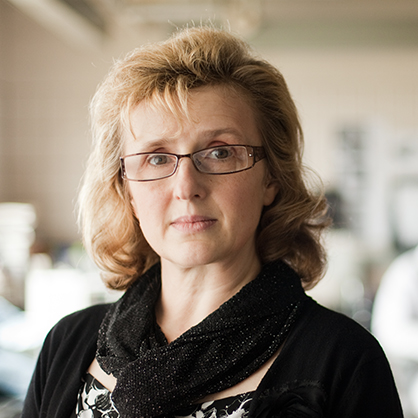Here is another milestone paper from our research group. We are investigating the potential link between breast cancer and Lyme disease. In this first paper, we have used normal and breast cancer cells and infected with Borrelia burgdorferi, the Lyme disease bacteria, and we found that it made the cancer cells more invasive, at least in a test tube. The authors on this paper are graduate students from the University of New Haven and the study was conducted during the pandemic when research was very difficult.
Senejani A, Maghsoudlou J, El-Zohiry D, Gaur G, Wawrzeniak K, Caravaglia C, Khatri V, MacDonald A, Sapi E (2022), Borrelia burgdorferi Co-Localizing with Amyloid Markers in Alzheimer's Disease Brain Tissues. J Alzheimers Dis; 85(2):889-903. doi: 10.3233/JAD-215398. https://pubmed.ncbi.nlm.nih.gov/34897095/
Sapi E, Gupta K, Wawrzeniak K, Gaur, G, Torres J, Filush K, Melillo A, Zlger B (2019) Borrelia and Chlamydia Can Form Mixed Biofilms in Infected Human Skin Tissues. Healthcare (Basel), 9(2), pii 46-55, doi: 10.1556/1886.2019.00003
Middelveen MJ, Filush KR, Bandoski C, Kasilawla RS, Melillo A, Stricker RB, Sapi E (2019) Mixed Borrelia burgdorferi and Helicobacter pylori Biofilms in Morgellons Disease Dermatological Specimens. Healthcare (Basel), 7(2), pii 70, doi: 10.3390/healthcare7020070
Sapi E, Kasliwala RS, Ismail H, Torres JP, Oldakowski M, Markland S, Gaur G, Melillo A, Eisendle K, Liegner K, Libien J, Goldman J (2019) The Long-Term Persistence of Borrelia burgdorferi Antigens and DNA in the Tissues of a Patient with Lyme Disease. Antibiotics, 8(4), pii 183, doi: 10.3390/antibiotics8040183
Soccaras, KM, Theophilus PAS, Torres, JP, Gupta K, Sapi E (2017) Antimicrobial activity of bee venom and mellittin against Borrelia. Antibiotics (Basel), 29;6(4), pii E70, doi: 10.3390/antibiotics6040031
Middelveen MJ, Sapi E, Burke J, Filush KR, Franco A, Fesler MC, Stricker RB. (2018) Persistent Borrelia infection in patients with ongoing symptoms of Lyme disease. Healthcare, 6, 33, pii E33, doi: 10.3390/healthcare602003
Sapi E, Gupta, K, Wawrzeniak K, Gauri G, Torres J, Filush KR, Melillo A, Zelger B. (2019) Borrelia and Chlamydia can form mixed biofilms in infected human skin tissues. European Journal of Microbiology and Immunology, 9(2), 46-55. doi: 10.1556/1886.2019.00003
Middelveen MJ, Filush KR, Stricker RB, Sapi, E. Mixed Borrelia and Helicobacter pylori biofilms in Morgellons disease dermatological specimens (2019) Healthcare, 17,7(2). pii: E70. doi: 10.3390/healthcare7020070.
Sapi E, Balasubramanian K, Poruri A, Maghsoudlou JS, Theophilus, PAS, Socarras KM,
Timmaraju AV, Filush KR, Gupta K, Shaikh, S, Luecke DF, MacDonald A, Zelger B. (2016)
Evidence of in vivo existence of borrelia biofilm in borrelial lymphocytomas European
Journal of Microbiology and Immunology, DOI:http://dx.doi.org/10.1556/1886.2015.00049
Sapi E, Theophilus, PAS, Burugu D, Luecke DF. (2016) Effect of Rpon, Rpos and Luxs
pathways on the biofilm formation and antibiotic sensitivity of Borrelia burgdorferi.
European Journal of Microbiology and Immunology, Dec 1; 6(4): 272–286.
Shaikh S, Timmaraju VA, Torres JP, Socarras KM, PAS, Sapi E. (2016) Influence of tick
and mammalian physiological temperatures on Borrelia burgdorferi biofilms. Microbiology,
Nov;162(11):1984-1995. doi: 10.1099/mic.0.000380.
Theophilus, PAS, Victoria MJ, Socarras KM, Filush KR, Gupta K, Luecke DF, Sapi E.
(2015) Effectiveness of Stevia rebaudiana whole leaf extract against the various morphological
forms of Borrelia burgdorferi in vitro European Journal of Microbiology and Immunology,
doi: 10.1556/1886.2015.00031
Timmaraju A, Theophilus PAS, Balasubramanian K, Luecke DF and Sapi E. Biofilm formation
by European Borrelia burgdorferi sensu lato strains in vitro. (2015) FEMS Letters,
doi: 10.1093/femsle/fnv120. Epub 2015 Jul 24.
Sapi E, Pabbati N, Datar D, Davies EM, Rattalle A, Kuo B.A. (2013) Culture conditions
for the growth and detection of Borrelia from human serum. International Journal of
Medical Sciences 10(4):362-376. doi:10.7150/ijms.5698.
Sapi E, Bastian SL, Mpoy CM, Scott S, Rattelle A, Pabbati N, Poruri A, Burugu D, Theophilus
PAS, Pham TV, Datar D, Dhaliwal NK, Timmaraju A Rossi MJ, Sinha SK, MacDonald A and
Luecke DF. (2012) Characterization of biofilm formation by Borrelia burgdorferi in
vitro. PLoS ONE October 7(10): e48277.
